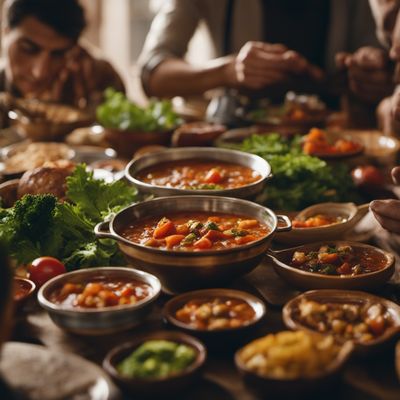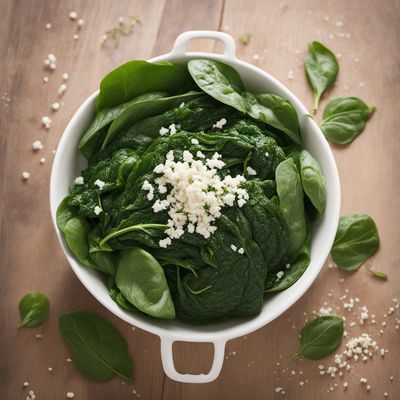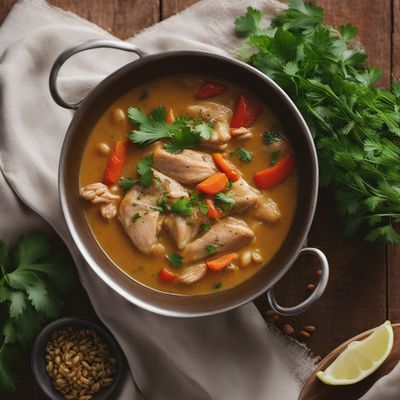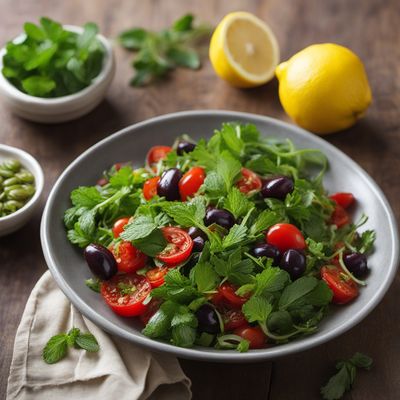
Recipe
Korean-style Şakşuka
Kimchi-infused Şakşuka: A Fusion of Turkish and Korean Flavors
4.7 out of 5
In Korean cuisine, bold flavors and fermented ingredients are key. This adaptation of the Turkish dish Şakşuka combines the vibrant and spicy flavors of Korean cuisine with the hearty and comforting elements of the original dish. Get ready to experience a unique fusion of Turkish and Korean flavors in every bite!
Metadata
Preparation time
20 minutes
Cooking time
35 minutes
Total time
55 minutes
Yields
4 servings
Preparation difficulty
Easy
Suitable for
Vegetarian, Vegan, Gluten-free, Dairy-free, Low calorie
Allergens
Soy (in the form of soy sauce)
Not suitable for
Nut-free, Soy-free, Paleo, Keto, High protein
Ingredients
While the original Turkish Şakşuka is typically made with eggplants, tomatoes, and peppers, this Korean-style adaptation incorporates traditional Korean ingredients such as kimchi, gochujang (Korean chili paste), and sesame oil. These additions bring a delightful kick of spice and tanginess to the dish, elevating it to a whole new level. We alse have the original recipe for Şakşuka, so you can check it out.
-
2 medium eggplants, cubed (500g) 2 medium eggplants, cubed (500g)
-
2 tablespoons vegetable oil (30ml) 2 tablespoons vegetable oil (30ml)
-
1 onion, thinly sliced 1 onion, thinly sliced
-
3 cloves garlic, minced 3 cloves garlic, minced
-
1 red bell pepper, thinly sliced 1 red bell pepper, thinly sliced
-
1 green bell pepper, thinly sliced 1 green bell pepper, thinly sliced
-
1 cup kimchi, chopped (200g) 1 cup kimchi, chopped (200g)
-
2 tablespoons gochujang (Korean chili paste) (30g) 2 tablespoons gochujang (Korean chili paste) (30g)
-
1 tablespoon soy sauce (15ml) 1 tablespoon soy sauce (15ml)
-
1 tablespoon sesame oil (15ml) 1 tablespoon sesame oil (15ml)
-
1 teaspoon sugar (5g) 1 teaspoon sugar (5g)
-
Salt and pepper, to taste Salt and pepper, to taste
-
Fresh cilantro or green onions, for garnish Fresh cilantro or green onions, for garnish
Nutrition
- Calories (kcal / KJ): 180 kcal / 753 KJ
- Fat (total, saturated): 8g, 1g
- Carbohydrates (total, sugars): 25g, 12g
- Protein: 4g
- Fiber: 7g
- Salt: 1.5g
Preparation
-
1.Preheat the oven to 200°C (400°F).
-
2.Place the cubed eggplants on a baking sheet and drizzle with 1 tablespoon of vegetable oil. Season with salt and pepper. Roast in the preheated oven for 20-25 minutes, or until the eggplants are tender and slightly browned.
-
3.In a large skillet, heat the remaining tablespoon of vegetable oil over medium heat. Add the sliced onion and minced garlic. Sauté until the onion becomes translucent and the garlic is fragrant.
-
4.Add the sliced red and green bell peppers to the skillet. Cook for 5 minutes, or until the peppers are slightly softened.
-
5.Stir in the chopped kimchi, gochujang, soy sauce, sesame oil, and sugar. Cook for an additional 2-3 minutes, allowing the flavors to meld together.
-
6.Add the roasted eggplants to the skillet and gently mix everything together. Cook for another 5 minutes, ensuring all the ingredients are well combined.
-
7.Taste and adjust the seasoning with salt and pepper if needed.
-
8.Serve the Korean-style Şakşuka hot, garnished with fresh cilantro or green onions.
Treat your ingredients with care...
- Eggplants — To reduce bitterness, sprinkle salt over the cubed eggplants and let them sit for 15 minutes. Rinse and pat dry before roasting.
- Kimchi — If you prefer a milder flavor, rinse the kimchi before chopping it.
Tips & Tricks
- For an extra kick of heat, add a sprinkle of Korean red pepper flakes (gochugaru) to the dish.
- Serve the Korean-style Şakşuka with steamed rice or Korean-style noodles for a complete meal.
- Feel free to adjust the amount of gochujang according to your spice preference.
- Leftovers can be stored in an airtight container in the refrigerator for up to 3 days.
- This dish tastes even better the next day as the flavors continue to develop.
Serving advice
Serve the Korean-style Şakşuka as a main dish accompanied by steamed rice or Korean-style noodles. It can also be enjoyed as a side dish alongside other Korean dishes.
Presentation advice
Garnish the dish with a sprinkle of sesame seeds and a few extra slices of fresh bell peppers for a pop of color. Serve it in a vibrant Korean-style bowl to enhance the visual appeal.
More recipes...
For Şakşuka » Browse all
For Turkish cuisine » Browse all
More Turkish cuisine dishes » Browse all

Türlü
Turkish Vegetable Stew
Türlü is a traditional Turkish dish that is made with a variety of vegetables and served with rice. It is a flavorful and healthy dish that is...

İzmir köfte
Izmir meatballs
İzmir köfte is a Turkish dish that is made from ground beef or lamb and bulgur. It is a popular comfort food that is often served with a side of salad.

Kavut
Kavut is a traditional Turkish dish made from cracked wheat. It is a simple and nutritious dish that is often served for breakfast.
More Korean cuisine dishes » Browse all

Samgyetang
Samgyetang is a traditional Korean dish made with a whole chicken that is stuffed with rice, ginseng, and other herbs. It is a hearty and...

Kkori gomtang
Ox bone soup with oxtail
Kkori gomtang is a traditional Korean soup that is made with beef bones and vegetables. The soup is known for its rich and savory flavor, and is...

Ojingeojeot
Spicy Pickled Squid
Ojingeojeot is a Korean dish made with fermented squid. It is a popular side dish in Korean cuisine and is often served with rice and other Korean dishes.








